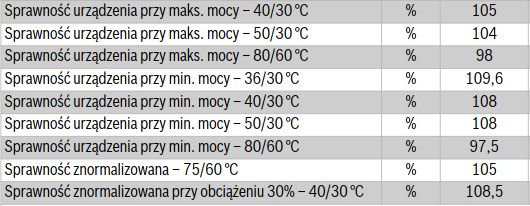pyrzynap wrote:
Hello
- average consumption of 8 m3 for the last 11 days,
I have a house of 240 m2 - from 1980,
It is to envy my colleague such a result.
I have been testing my barely 162 meters for 11 days, I have reached 6.5 -7.5 meters a day at an inside temperature of 20 degrees Celsius.
So what is the size and temperature night 19.5 day 20 to 21 evening consumption is ok - from October 25 from commissioning, which is really frost -2 and heat +12 total consumption until today 100 m3 - 12 days - average 8 , 3
I plan the average consumption during the season of 6 months - up to 10 m3, maybe it will be possible to go lower then it would be great if the whole year was closed from 1200 m3 of hihi, but probably not possible times like this.
It would be a perpetual motion machine, I guess.
I am still thinking about changing the tank, currently 120 l - 13kW, to a heat pump - air, water, such as DHW so that maybe a little during the transition periods up to +10 C heat from the CH pump - I wonder if it would work - what do you think - someone has some experiences.
My boiler ACV Prestige solo 32 MKIII - from 3.8 kW to 32 kW - modulation approx
Hello
- average consumption of 8 m3 for the last 11 days,
I have a house of 240 m2 - from 1980,
It is to envy my colleague such a result.
I have been testing my barely 162 meters for 11 days, I have reached 6.5 -7.5 meters a day at an inside temperature of 20 degrees Celsius.
So what is the size and temperature night 19.5 day 20 to 21 evening consumption is ok - from October 25 from commissioning, which is really frost -2 and heat +12 total consumption until today 100 m3 - 12 days - average 8 , 3
I plan the average consumption during the season of 6 months - up to 10 m3, maybe it will be possible to go lower then it would be great if the whole year was closed from 1200 m3 of hihi, but probably not possible times like this.
It would be a perpetual motion machine, I guess.
I am still thinking about changing the tank, currently 120 l - 13kW, to a heat pump - air, water, such as DHW so that maybe a little during the transition periods up to +10 C heat from the CH pump - I wonder if it would work - what do you think - someone has some experiences.
My boiler ACV Prestige solo 32 MKIII - from 3.8 kW to 32 kW - modulation approx



